When I started leading workshops 20 years ago, I had almost no experience working with models and found it very intimidating. Since then, though, I’ve learned a lot and really come to enjoy these opportunities. Here’s some of what I’ve learned, with examples from a workshop I recently taught in Savannah, GA.
Most people are uncomfortable in front of a camera, and while models become used to it, it’s still important to develop a relationship with them. That’s why I always want to chat a little before the shoot, both to get to know them somewhat and to help them feel more relaxed working with me. I’m always surprised at how my students often seem afraid to speak to the models. At the very least, you want to give them encouragement and feedback, telling them they look great and suggesting how they might turn or look based on the light and composition.
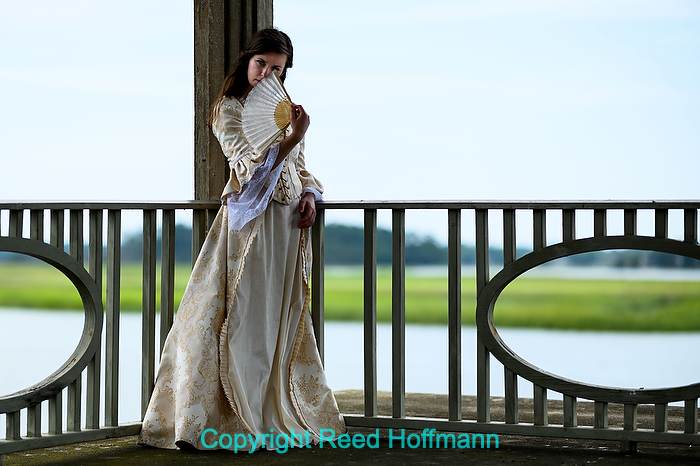
Hannah was the least experienced of the models we had that day, so I tried to find poses that didn’t require her to do much with expressions. Nikon Z 6, Aperture Priority, Sunny white balance, ISO 125, 1/3200 at f/2 in Matrix metering, +1.0 EV, Nikkor AF 105mm f/1.4 lens.
Which brings me to my three favorite words when teaching photography: Subject, Light and Background. Your subject, of course, is the model, and that’s why it’s so important to communicate with them. Moving left or right, turning their body, tilting their head up or down, eyes to or away from the camera, smile or no smile, these are all suggestions you should be making. And, just as importantly, if you’re working with an experienced model, make this a collaborative experience. Ask what ideas they have, let them work through a series of poses on their own, asking them to hold each one for 5-10 seconds so you have time to shoot. When one pose looks great, ask them to stop and work that for a bit.
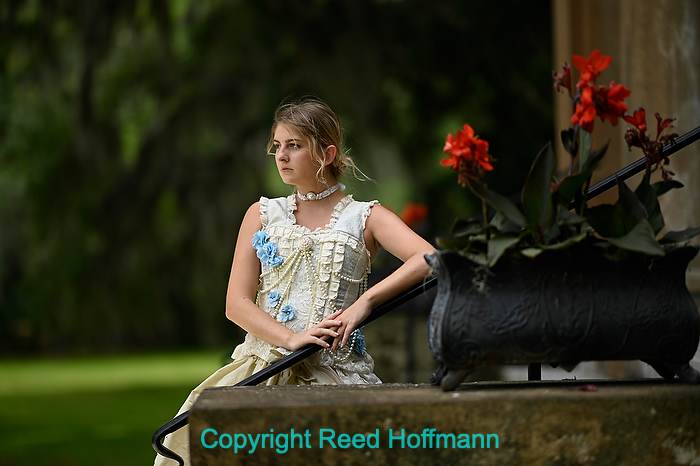
As an actor, Alexis was able to give us a great variety of facial expressions. These two shots were just four-seconds apart. Nikon Z 6, Aperture Priority, Sunny white balance, ISO 100, 1/2000 at f/1.4 in Matrix metering, -0.3 EV, Nikkor AF 105mm f/1.4 lens,
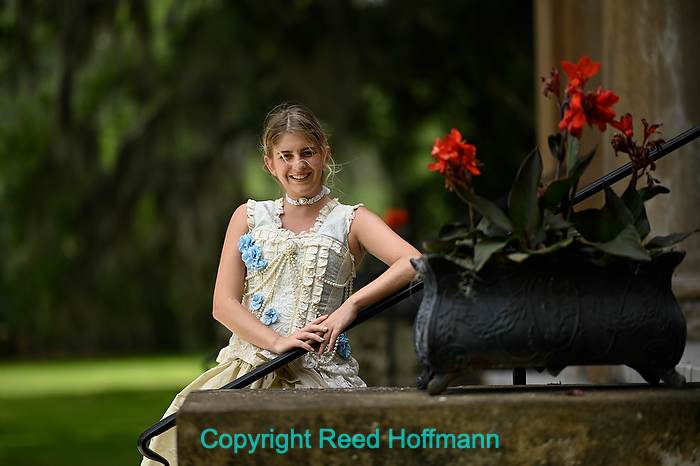
And remember, unless it’s just a headshot, the outfit they wear will be a big part of any picture. Look at it and decide what its strengths and weaknesses are and how you’ll work with them. The model’s face is usually the last thing I look at when setting up a shot. I focus first on their pose, how their arms, hands, legs and feet look and fit with the scene I’m working on. Once I’m happy with that, then comes the time to concentrate on their face, how they hold their head, their expressions.
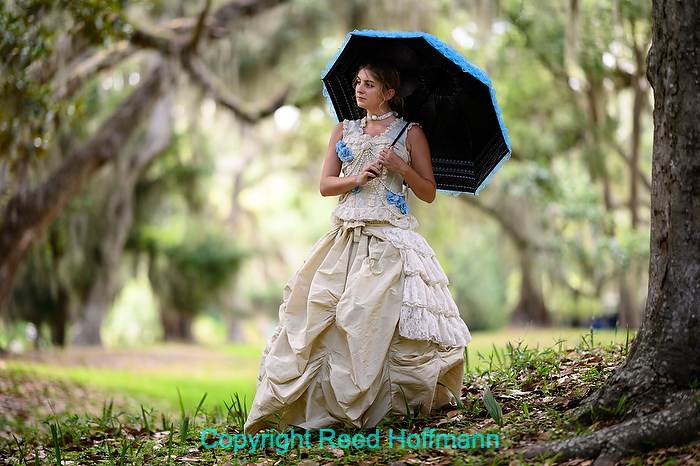
I wanted the attention here to be on Alexis’ outfit, so I used a very wide aperture and made sure she was well away from the trees in the background to create a Powerfully shallow depth of field. Nikon Z 6, Aperture Priority, Sunny white balance, ISO 100, 1/320 at f/1.4 in Matrix metering, -1.0 EV, Nikkor AF 105mm f/1.4 lens.
Light, of course, is crucial as well. Not only whether you have enough, but what are its qualities? Hard or soft? Does it have color and how are you managing that? What’s the direction and how are you working with that? If possible, I prefer shooting in different types of light, so if outdoors on a sunny day, I’ll look to work in both the sun and the shade. Quantity of light will also help determine exposure, and with that you’ll likely be most concerned with aperture and depth of field. You always should ask yourself, “How large a role do I want the environment to play in this photo?
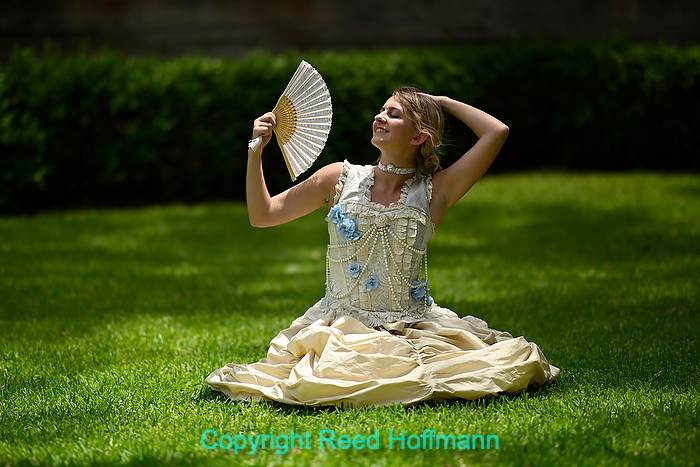
We had a partly cloudy sky, which meant I could place Alexis in a spot that had hard light from the sun, wait for the light to change and then make a different picture. Nikon Z 6, Aperture Priority, Sunny white balance, ISO 125, 1/6400 at f/1.4 in Matrix metering, -0.7 EV, Nikkor AF 105mm f/1.4 lens.
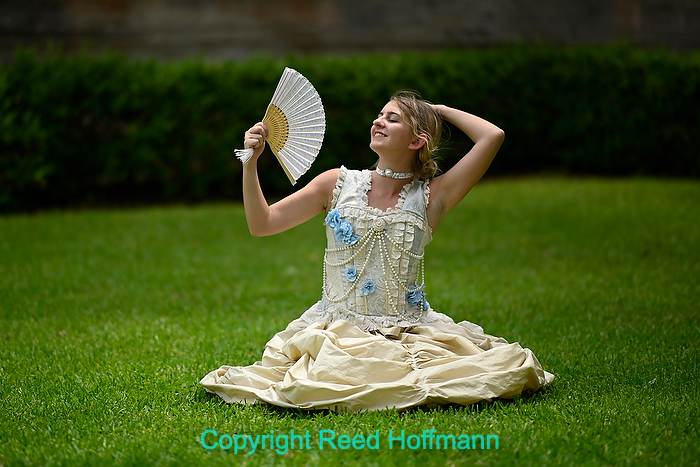
And here’s that same scene with clouds instead of sun. Nikon Z 6, Aperture Priority, Sunny white balance, ISO 125, 1/3200 at f/1.4 in Matrix metering, -0.3 EV, Nikkor AF 105mm f/1.4 lens.
Continuing with light, I prefer to work with available as much as possible. That lets me work faster, and with a simple reflector I can add or remove/diffuse light. If using flash, I always prefer it to be off-camera, and then usually use modifiers (like softboxes or umbrellas) to shape and control it.
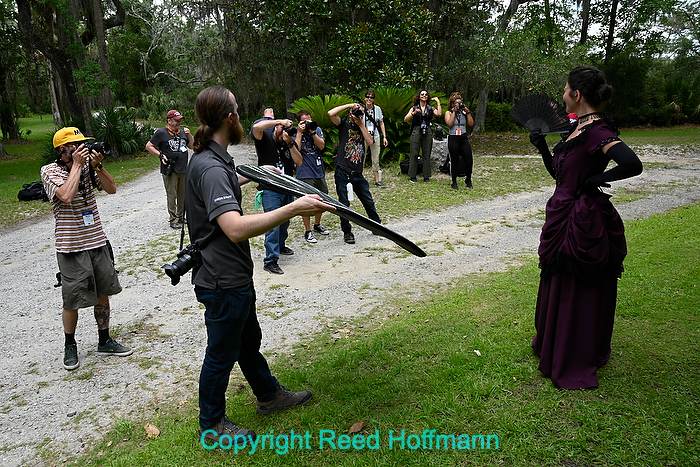
With Alex’s help, the reflector gives us some extra light on Kathryn and also allows a number of people to be shooting at the same time. If we were using flash, everyone would have to take turns. Nikon Z 6, Aperture Priority, Sunny white balance, ISO 100, 1/125 at f/6.3 in Matrix metering, 0.0 EV, Nikkor 24-70mm f/4 lens at 27.5mm.
Background, while it may be last on my mantra, is often the first thing I consider during a model shoot. Where will I place the person in the scene? Again, unless it’s a headshot, that will play a large role in the picture. Is the location going to say something about them, or is it just the setting for the photo? Will they be close to other objects, or far away? How do they, and their outfit, work compositionally?
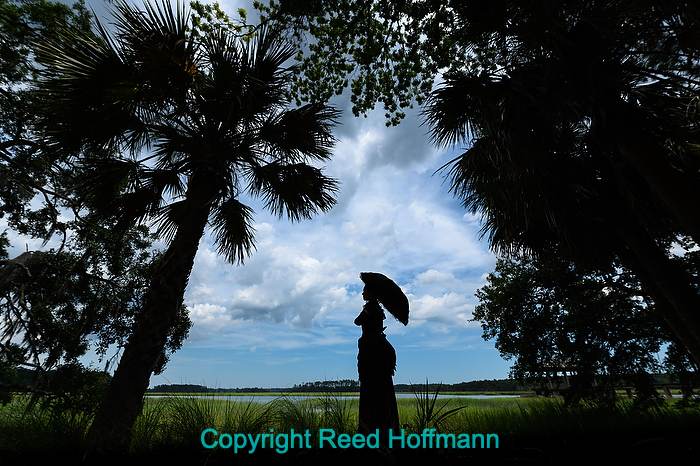
In this case, the setting made the picture more than the model. But I still needed to ask Kathryn to stand on a stump to get her above most of the grasses, turn so I had a good profile and lift her umbrella to make sure her profile was visible. Nikon Z 6, Aperture Priority, Sunny white balance, ISO 125, 1/1000 at f/8 in Matrix metering, -0.7 EV, Nikkor 14-24 mm f/2.8 lens at 15mm.
One final, very important rule: never touch a model without asking permission. If there’s a stray hair, or a collar’s uneven, always ask them to fix it. If they’re comfortable having you do that, they’ll say so.
Of course, when a shoot goes well all three keys – subject, light and background – come together, and make it a lot of fun. That’s certainly what we experienced in Savannah, and why I enjoy these types of shoots so much now. Here are a few more photos and tips from that day:
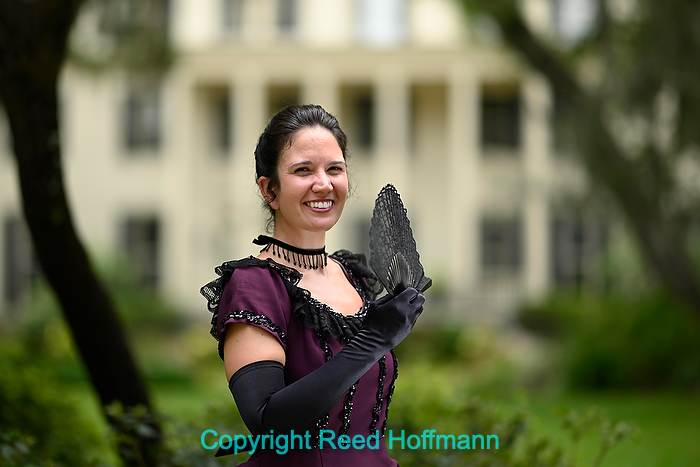
When I saw these trees framing the mansion, I knew just where I was going to ask Kathryn to stand. Shallow depth of field keeps the viewer’s attention on her while still letting them know there’s a mansion and trees back there. Nikon Z 6, Aperture Priority, Sunny white balance, ISO 100, 1/1600 at f/1.4 in Matrix metering, +0.3 EV, Nikkor AF 105mm f/1.4 lens.
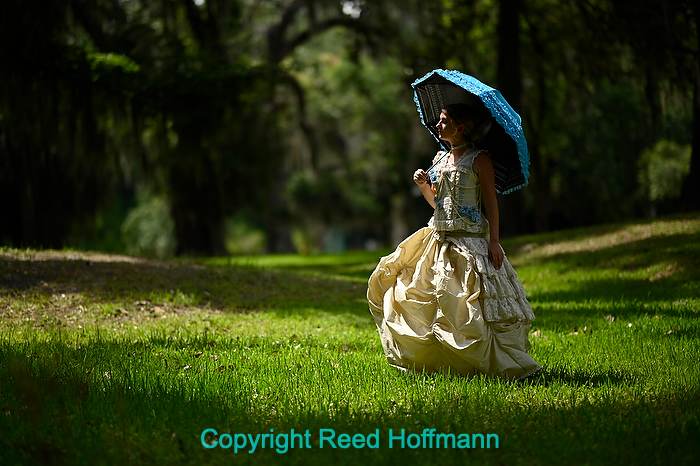
Seeing this spot of sunlight, I again knew exactly where I wanted Alexis to stand and how I wanted her to pose. I also asked her to tilt her parasol back so the sun would light her profile. Nikon Z 6, Aperture Priority, Sunny white balance, ISO 100, 1/4000 at f/1.4 in Matrix metering, -1.0 EV, Nikkor AF 105mm f/1.4 lens.
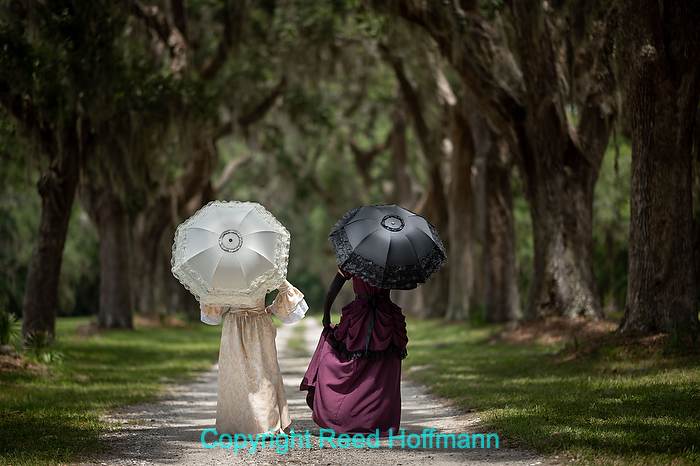
By not showing the models’ faces, this picture becomes all about their outfits and the setting they’re in. Nikon Z 6, Aperture Priority, Sunny white balance, ISO 100, 1/5000 at f/1.4 in Matrix metering, -1.0 EV, Nikkor AF 105mm f/1.4 lens.
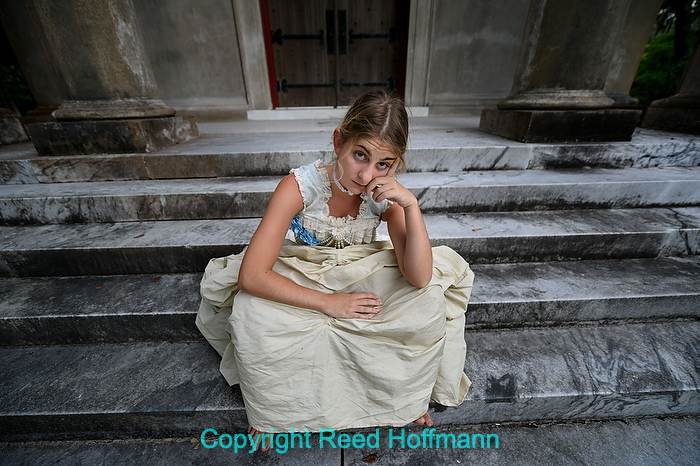
I told Alexis I wanted a tired, frustrated look, and she delivered. She was wearing flip flops, so I asked her to kick them off, since I thought we’d see her feet and those wouldn’t go with the outfit. Nikon Z 6, Aperture Priority, Sunny white balance, ISO 200, 1/800 at f/2.8 in Matrix metering, 0.0 EV, Nikkor AF Zoom 14-24mm f/2.8G lens at 14mm.
If you like this story, please share it with your friends and let them know about the links on photography that I post on my business Facebook page. I’m also on Instagram and Twitter, @reedhoffmann. And if you’re curious about the workshops I teach, you can find them here.

Thanks Reed! Very helpful tips!